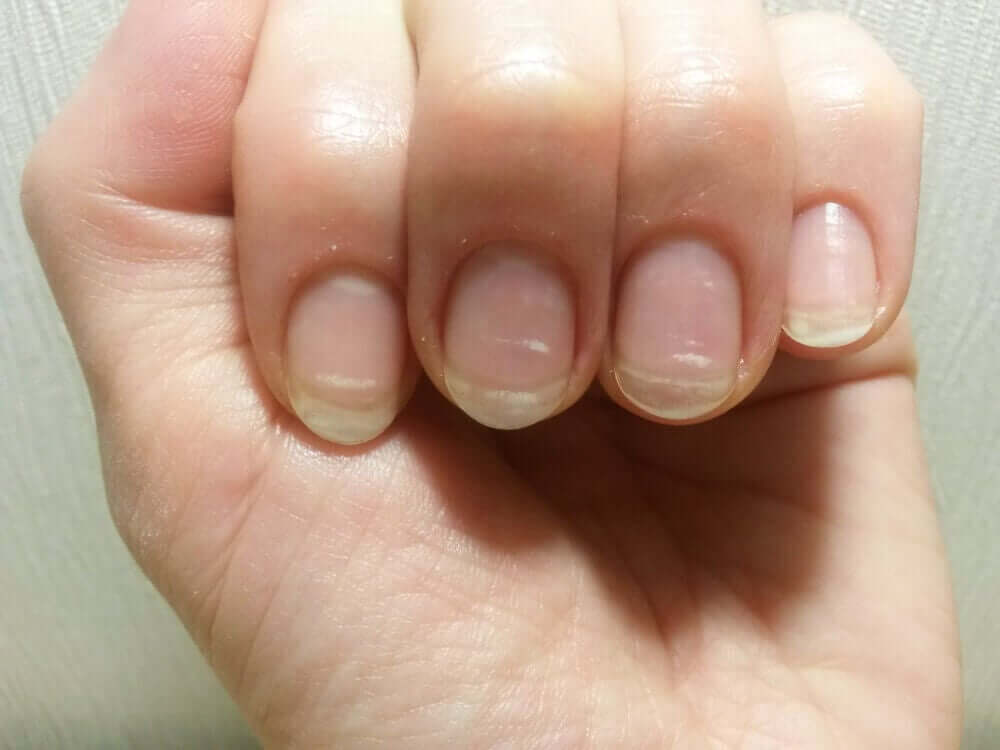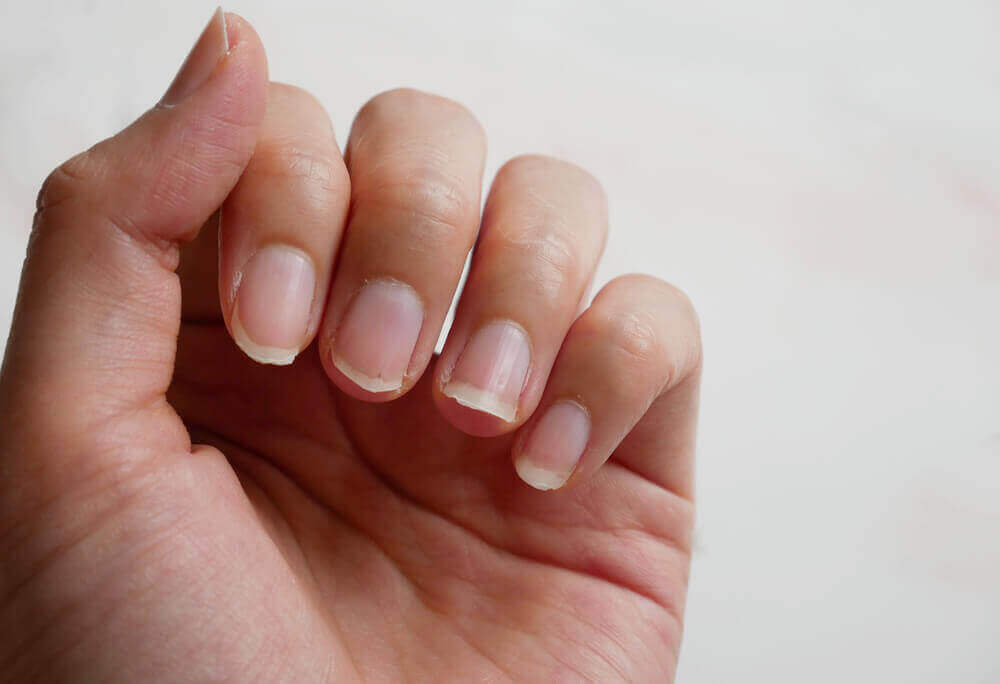What the Lunula of Your Nails Says about Your Health


Reviewed and approved by the doctor José Gerardo Rosciano Paganelli
Believe it or not, your fingernails can tell you a lot about your health. The lunula on a nail can let you know if you have some kind of health problem or ailment, even if you haven’t noticed it yet.
If you pay attention how your nails look, you might be able to identify health issues before they become more serious.
What should the lunula look like on each finger?
The lunulae look different depending on the finger. Remember that these signs aren’t always accurate, so if you suspect that there may be an underlying disease, it’s best to see your doctor so that he or she can perform the appropriate tests.
Take note to learn how to detect irregularities in your nails!

1. Lunula on your pinky finger
The lunula on your pinky finger should be nearly invisible or non-existent. It’s believed to be related to the function of your kidneys, small intestine, and heart. If you notice that it is larger than normal, pay attention – you could have high blood pressure.
2. Lunula on the ring finger
The lunula on your ring finger is related to your reproductive and lymphatic systems. On the other hand, if it’s barely visible, it might indicate a metabolic problem.
3. Lunula on the middle finger
The lunula on your middle finger could be related to your brain or cardiovascular system. If you can’t see the lunula on this finger, it could indicate a potential issue with your blood vessels or high blood pressure.
Don’t miss: Low-Impact Cardiovascular Training: Exercises and Recommendations
4. Lunula on the index finger
If your index finger lunula is completely or nearly gone, you could have issues in your intestine or pancreas. It could also be a chronic upper respiratory disease.
5. Lunula on the thumb
It’s believed that this lunula is linked to the function of your lungs and spleen. It’s the largest of the five and should take up no more than 25% of the entire length of your nail bed.
- If it is smaller, it could be due to tobacco use.
- If it’s larger than that, it may be because of high blood pressure.
6. Large lunulae
If you’re unsure whether your lunula is large or small, just remember that a lunula is considered large when it takes up a third of your entire nail. This could indicate problems with your cardiovascular system, changes in heart rate, or low blood pressure.
People who do heavy physical activity for work or are under a lot of stress can also have large lunulae.
You might like: How to Improve Your Diet to Treat Low Blood Pressure
7. Small lunulae

A lunula is small if you can’t see it at all, or it barely extends beyond the surface of the cuticle. This could indicate low blood pressure or circulatory problems, as well as a weak immune system, slow metabolism, and an iron or vitamin B12 deficiency.
If you notice that your lunulae are clearly isolated with a transversal line to the rest of the nail, you could be having blood sugar problems or developing diabetes.
8. Invisible lunulae
Keep in mind that sometimes you might not be able to see your lunulae, but it doesn’t mean they’re not there. If it has truly disappeared, however, it could be a problem with your blood circulation.
The absence of lunulae could be related to thyroid problems, lack of vitamin B12, and iron deficiency.
9. Color changes in the lunulae
Another problem you might run into is when your lunulae change color. If you notice that they are greyish instead of the normal white, it could indicate that you need some rest. This shade can also be related to problems with digestion and a difficulty absorbing nutrients.
A white lunula indicates that everything is in order, as this is the natural color. Remember that your lunula should be several shades lighter than your skin tone. If your lunula is more violet in color, it could be a sign of poor circulation and a lack of oxygen in your organs and tissues.
Finally, if you notice that your lunula are black, this is a symptom of heavy metal contamination. If this occurs, see a doctor immediately.
Occasionally, your nails may look very different from what you’re used to seeing. If you notice that they change color or seem brittle, see your doctor so that he or she can diagnose and treat the underlying problem.
All cited sources were thoroughly reviewed by our team to ensure their quality, reliability, currency, and validity. The bibliography of this article was considered reliable and of academic or scientific accuracy.
- Axler, E., Malik, S., Lu, A., Hong, S., Desai, A. D., Malik, S., & Lipner, S. R. (2024). Nail pigmentation may be an early sign of minocycline-associated cutaneous pigmentation: A systematic review. Journal of the American Academy of Dermatology, 91(6), 1278-1281. https://www.jaad.org/article/S0190-9622(24)02745-2/fulltext
- Dehavay, F., & Richert, B. (2021). Nail is systemic disorders: Main signs and clues. Dermatologic Clinics, 39(2), 153-173. https://www.derm.theclinics.com/article/S0733-8635(20)30116-9/abstract
- Lakshmi, B. S., Ram, R., & Kumar, V. S. (2015). Nail changes in a renal patient. Indian Journal of Nephrology, 25(6), 383. https://journals.lww.com/ijon/fulltext/2015/25060/nail_changes_in_a_renal_patient.16.aspx
- Sano, H., & Ogawa, R. (2014). Clinical evidence for the relationship between nail configuration and mechanical forces. Plastic and Reconstructive Surgery–Global Open, 2(3), e115. https://journals.lww.com/prsgo/fulltext/2014/03000/Article.4.aspx
- Shribman, S., Poujois, A., Bandmann, O., Czlonkowska, A., & Warner, T. T. (2021). Wilson’s disease: update on pathogenesis, biomarkers and treatments. Journal of Neurology, Neurosurgery & Psychiatry, 92(10), 1053-1061. https://jnnp.bmj.com/content/92/10/1053.abstract
- Tan, S., & Senna, M. M. (2017). Hair and nail manifestations of systemic disease. Current Dermatology Reports, 6, 17-28. https://link.springer.com/article/10.1007/s13671-017-0169-6
- Witkowska, A. B., Jasterzbski, T. J., & Schwartz, R. A. (2017). Terry’s nails: a sign of systemic disease. Indian Journal of Dermatology, 62(3), 309-311. https://pmc.ncbi.nlm.nih.gov/articles/PMC5448267/
This text is provided for informational purposes only and does not replace consultation with a professional. If in doubt, consult your specialist.








